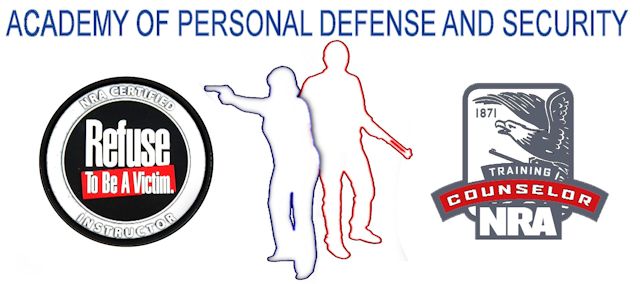

Private Instruction Available!
2505 Edgemont Road
Wendell, NC 27591
 |
 |
Private Instruction Available! 2505 Edgemont Road Wendell, NC 27591 |
| HOME | Courses | Schedule | Resources | FAQ's | Contact Us |
|
Join, Renew, Upgrade your NRA Membership Here!
With
Discounts!! |
Personal Defense Firearms and Ammunition Selection Choosing a firearm for personal defense and conceal-ability generally, does not lend itself to accuracy or marksman characteristics. Depending on the size of the person, conceal-ability is determined by the ability to “hide” the firearm from normal view with clothing/accessories. Comfort of carry, especially weight of the firearm should be considered as-well. Shorter barrels and smaller frames are generally the better choice. Two factors that follow are 1. Caliber/power factor and 2. Sight Radius (distance between front and rear sight). Recovery from the recoil of higher caliber/more powerful cartridges is more difficult with smaller, lighter framed pistols. As long-range shots are generally not required in the personal defense scenario, shorter sight radius may not be as critical. **Note: A defensive firearm is NOT the best choice for learning to shoot! Range time and experience with a larger frame (heavier and longer sight radius) or smaller caliber (with longer sight radius) firearm is a much better tool for learning marksmanship fundamentals! The same fundamentals can then be transferred to a defensive firearm by an experienced and proficient shooter. Semi-automatic vs. Revolver: There are many pros and cons to consider when choosing a firearm. This is an individual decision based upon education, experience, physical limitations and attributes, budget, style and most importantly...purpose. Never attempt to purchase a handgun for someone else without their input. This is a personal discovery. You wouldn't attempt to buy someone else's shoes expecting them to fit and it is even more important for firearm selection. If they don't feel comfortable with gun ownership, don't push it on them. If they don't know enough to render an opinion about their preferences (other than color) they more than likely shouldn't possess a firearm! Semi-automatic Pistols - Most have a higher ammunition capacity. A lot of semi-autos of .380, 9mm, 40S&W carry a minimum of 10 rounds with some holding as many as 19 in their magazines. While this is considerable “fire-power”, most defensive scenarios require, maybe 3-4 rounds. Familiarity with the operation of your semi-auto is imperative! Maintenance and cleaning is required for the firearm to operate reliably. The operator should be able to recognize and clear stoppages quickly and efficiently. Compatible and reliable ammunition is a must. Remember there is a difference between range ball ammo and defensive ammo. There are great safety implications when used incorrectly. Revolvers - The easiest gun to shoot and the hardest gun to shoot well! Revolvers generally carry less ammunition rounds in their cylinders. Modern day revolvers generally carry 5 to 6 rounds of ammunition. Maintenance/cleaning is required often. Consider a revolver when carrying in dusty environments (ankle holsters). Small, light-weight frames, short-barreled revolvers are readily available from most manufacturers. Caliber and Power: If you subscribe to “Hatcher's Theory”, then you know that “stopping power” is made-up of a combination of factors. Bullet momentum, frontal area, velocity, and a 'form factor' are to be considered. The necessity to shoot an assailant infers a desire to incapacitate him/her immediately. The most effective method of stopping the threat is for the assailant to “absorb” the stopping power of the bullet. Too much power and the bullet goes right through. Not enough power and the assailant continues the assault. Wikipedia has an article that goes into greater detail on Stopping Power.Conclusion Revolvers are recommended for defensive shooting scenarios, for conceal-ability, and for reliability. Small framed, light-weight revolvers (such as a .38 Special) are best for up close defensive encounters. Semi-automatics require a higher level of commitment to training and will provide more capacity. .22 caliber firearms are perfect for learning marksmanship but are not recommended for defense due to the unreliability of rim fire ammunition. Consider using .22 caliber for defense only if physical limitations and ability require it. For most, we recommend a minimum of .380 caliber or higher such as 9 millimeter, .40 S&W or .45. Firearms with heavier weights and a longer sight radius generally produce more accurate results. Remember to choose a reliable defense ammo. Consider Federal's Hydra-Shok, Remington's Golden Sabre, Speer's Gold Dot, Winchester PDX1or Hornady's Critical Defense.
|